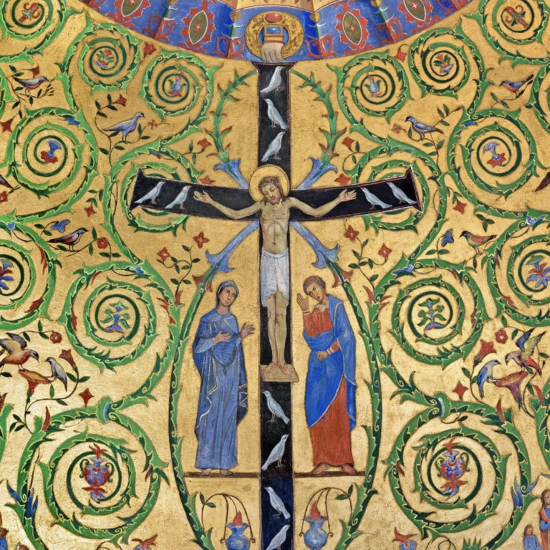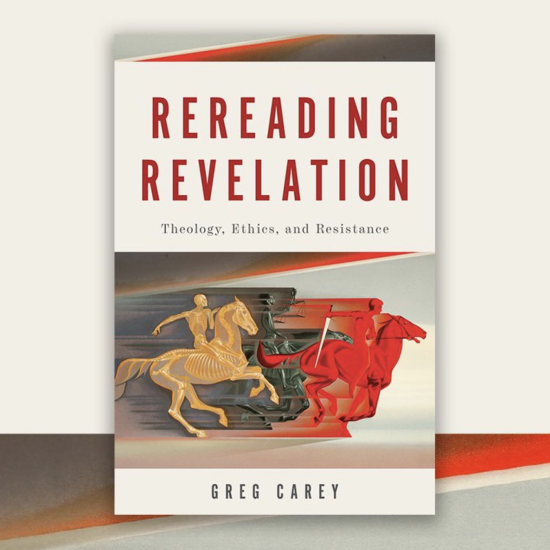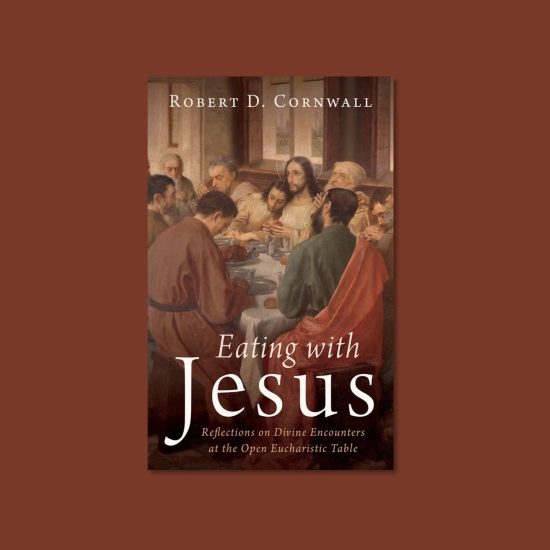

LATTER-DAY SAINT THEOLOGY AMONG CHRISTIAN THEOLOGIES. By Grant Underwood. Foreword by Craig Blomberg. Grand Rapids, MI: Wm. B. Eerdmans Publishing Company, 2025. Xxv + 609 pages.
I will confess, I’ve been fascinated with the Mormon Church since childhood. Our family visited Temple Square in Salt Lake City when I was around seven or eight during a stopover on a family trip to Colorado. We toured the grounds and even heard the Tabernacle choir rehearse. There is something fascinating about the story of this American-born religion, which originated during the Second Great Awakening. Like my own Disciples of Christ (Stone-Campbell) tradition, it has a restorationist component. The difference between the two is that the founders of the Church of Jesus Christ of Latter-day Saints pushed their version of restorationism much further than the SCM folk. Over the years, I’ve had several LDS friends, all of whom were good, solid people. At the same time, as a teenager, I got caught up studying religious “cults.” As a result, I became convinced that Mormonism is not a Christian tradition. Instead, from my evangelical perspective, it is a heretical cult that leads people astray. That was a long time ago and my theological perspectives have matured. Nonetheless, the question persists: Is the Church of Jesus Christ of Latter-Day Saints part of the Christian community, or is it something else? Jesus plays an important part in the LDS story, but does it lie too far outside the fold to be considered Christian?

Robert D. Cornwall
So, are Mormons Christians? If they self-identify as such, is that sufficient, or are there criteria by which they might be excluded? With that question in mind, several decades back a group of evangelicals that included Richard Mouw, then President of Fuller Theological Seminary, and Craig Blomberg, a New Testament professor at Denver Seminary, began a series of conversations with leading LDS scholars about the differences and similarities between the two traditions. One of the contributors to that ongoing conversation is Grant Underwood, an LDS historian and the Richard L. Evans Chair of Religious Understanding at Brigham Young University. Underwood took on the task of writing a major theological text that sets LDS theology in conversation with more mainstream Christian theologies, noting the similarities and differences.
The resulting book is titled Latter-Day Theology among Christian Theologies. This is a massive undertaking, standing at nearly 550 pages in length, with detailed footnotes throughout. Underwood reveals a strong understanding of Christian theology, including Eastern Orthodoxy, which he brings into the conversation with great regularity. While I might not agree with LDS positions on a number of points, Underwood is to be commended for the thoroughness of his exposition and his willingness to note where there are significant differences, especially when it comes to views of God’s nature. While it is inappropriate to call the Church of Jesus Christ of Latter-Day Saints a cult, the question still remains as to whether it is a Christian tradition. For his part, Underwood is clear that his tradition is part of the larger Christian faith tradition.
When it comes to nomenclature, Underwood acknowledges the complexity that goes with the Church of Jesus Christ of Latter-Day Saints. Most people outside the movement know this community as Mormons. On the other hand, most people within the church prefer Latter-Day Saints or LDS. In taking note of this complexity, Underwood has chosen to use all of the various descriptors interchangeably. As for whether the LDS church is Christian, Underwood writes that there is “no universally regarded central authority or supreme court of Christianity to determine such matters” (pp. 3-4). Therefore, there is no authoritative body to make that determination. He is correct in making that assertion. Therefore, when it comes to the Mormon self-identification as being a Christian faith community, we should give them the benefit of the doubt even if major theological questions remain present.
In organizing Latter-Day Saint Theology among Christian Theologies, Underwood follows traditional theological categories beginning with the nature of God and moving to eschatology. He writes that “within Christianity, these interrelated but topically distinct ‘theologies’ address questions asked by generations of Christians and reflect centuries of effort to provide a comprehensive, logically consistent set of plausible answers” (p. 5). In this, Underwood largely succeeds. I am curious, however, why he did not provide a section on pneumatology. He speaks of the Holy Spirit throughout and acknowledges that LDS theology affirms a form of the trinity, though each member is understood to be a distinct embodied being. Since the Holy Spirit plays a significant role in LDS theology, I believe that a chapter focusing specifically on LDS beliefs concerning the Holy Spirit, especially relating to the similarities and differences with more mainstream Christian thought, would have been helpful.
Methodologically, Underwood draws from the Bible, along with Christian theologies present in antiquity to the present (Orthodox, Roman Catholic, and Protestant traditions), as well as a variety of LDS sources including the Book of the Mormon to the and other writings and pronouncements made by leading LDS figures through the centuries, including Joseph Smith. While Underwood mentions Sidney Rigdon in several places, I believe that the book would have been enhanced by giving more attention to Rigdon, who was a major early leader and disciple of Joseph Smith. Rigdon, of course, joined Smith after having been a leading member of the early Disciples of Christ Movement (before the union with Stone’s Christians). Since there are interesting connections to Alexander Campbell’s restorationist thinking in LDS theology, I would have liked to have seen more analysis of that relationship. To what degree did Campbell’s ideas permeate Smith’s early thinking?
Underwood divides the book into twelve chapters. The first two focus on LDS understandings of God, including the LDS view of the Trinity (it is not Nicaean). He also examines LDS beliefs concerning creation, providence, and theodicy in conversation with mainstream Christian theologies. One thing that differentiates LDS theology from mainstream Christian theology is the LDS belief that God the Father is an embodied being, as is true of Jesus and the Holy Spirit. Thus, Mormon trinitarianism is tri-theistic, such that we have a plurality of gods (which is why I wish there had been a chapter on pneumatology). Nevertheless, Mormons claim to worship the Father, Son, and Holy Spirit as one God, not three Gods. Chapter two focuses on the actions of God in terms of creator, providence, and the eternal question of the nature of evil and God’s responsibility.
The Mormon church is by its own definition the Church of Jesus Christ of Latter-Day Saints. Therefore, Jesus figures prominently in the Mormon self-understanding, which forms the basis of their claim to be Christian. With that in mind, Chapters Three and Four focus on Jesus’ identity (chapter 3) and his atoning work (chapter 4). When we think of LDS beliefs about LDS views of God’s nature, we need to keep in mind that Mormons teach that God the Father (with God the Mother) gave/gives birth to spirit children, such that all humans directly descend from the Father, with Jesus being the firstborn of God’s spirit children. While Jesus is the firstborn child and the starting point of human creation, all humans are God’s children and potentially divine beings. When it comes to atonement theology, Mormons affirm the work of Jesus on the cross having atoning properties, but LDS theologies of the atonement are diverse, drawing on the various theories that have emerged over time. However, while legal views predominate, Mormons do not teach that Christ’s death placates (propitiates) God’s anger.
The LDS theological anthropology is the subject of Chapter 5, subtitled “Humanity as ‘Royalty Deposed.'” Here, we need to keep in mind LDS conceptions of humanity’s spiritual pre-existence as direct children of God the Father (and Mother). In LDS thinking, humans are understood to be embodied pre-existent souls. The fallenness of humanity has its origins in that pre-existent state, which helps explain the presence of evil. When it comes to spiritual pre-existence, Underwood does a good job comparing and contrasting the LDS teachings with those of Origen. When it comes to the imago dei, the LDS version is rather literal since God and humanity share the same ontological nature. Consequently, one might say that for Mormons, humans have both seeds of divinity and sinful proclivities. This leads to a chapter on Soteriology, in which Underwood offers a comparison/contrast of LDS and mainstream Christian understandings. This discussion is rooted in the earlier chapters on the person and work of Jesus (Chapters 3 and 4). At its heart, LDS soteriology is synergistic, bringing together divine initiative with human response (and responsibility).
Having discussed the nature of God, Christology, anthropology, and soteriology (salvation), we come to LDS views of the nature of the Church. Underwood uses the four traditional marks as a touchstone — The Church is One, Holy, Apostolic, and Catholic. There is also a discussion of the relationship between the church as an institution and the kingdom of God. One thing that is clear here is that for Mormons, the church is a visible entity, and they believe they are by self-definition the one true church. If Chapter 7 focuses on the images and marks of the church, in Chapter 8, Underwood explores questions of authority, priesthood, and ministry. Here again, there are similarities but many distinctive understandings, especially when it comes to the concept of apostles and prophets. There is here a strong sense of apostolic succession, but not in the usual sense, since Mormons believe that Peter, James, and John visibly appeared to Joseph Smith and Oliver Cowdery, ordaining them as Apostles. It is from this event that apostolic succession flowed. In this section, we also learn about forms of Mormon priesthood (Aaronic and Melchizedek, both of which are open only to males).
Chapters 9 through 11 focus on sacraments. There are discussions in these chapters about baptism (immersion), confirmation (anointing), the Eucharist (weekly using water instead of wine or grape juice), and other sacraments, including eternal marriage, endowments, and baptisms for the dead, all of which take place in the Temples. There is an admission that when it comes to the endowment ceremony, it looks a lot like Masonic rituals. While non-Mormons are not allowed into the Temples, in recent years the LDS officials have been much more forthcoming about the nature of these rituals and their purposes, all of which Underwood takes advantage of to explore ideas that for the most part are foreign to “traditional” or mainstream Christianity, though there are elements that overlap.
Finally, there is the requisite chapter on Eschatology (Chapter 12). As one would expect, we find here descriptions of divine judgment, heaven and hell, and other elements of the afterlife. LDS eschatology is complex. It has elements that are similar to mainstream Christianity, but especially regarding the afterlife, there are significant differences. One of those differences is the potential to evolve into gods, like the Father of all. While the idea of theosis (deification) is present in mainstream Christianity, this is quite different. While Mormon eschatology has a place for the doctrine of hell, the assumption is that most people will eventually attain some form of heaven. When it comes to heaven, there are some unique features, including different levels of heavenly existence depending on one’s faith expression. Since Mormons seal marriages for eternity, eternal marriage plays an important role in LDS views of heaven.
Even as Underwood lays out LDS distinctives when it comes to theology, he does so in conversation with Orthodox, Catholic, and Protestant theologies. He does so quite masterfully. One can read this book, block out the LDS elements, and find a competent description of Christian theology. While I might quibble with something he writes here or there, it is clear that Underwood has a strong command of Christian theology in general, which makes his arguments for the inclusion of the LDS church within the larger stream of Christianity compelling. I might not agree with many of the LDS distinctives, such as its view of the Trinity or aspects of its eschatology, as well as its embrace of sacred Scriptures beyond the Bible, but he demonstrates that there are many points of connection. He even connects LDS views to Open Theism as well as Eastern Orthodoxy. So, is Mormonism Christian? You will need to be the judge. They claim that they are Christian, and there is no one body that can say differently (not even the Pope). One thing I noticed, however, is that there is a strong masculine/patriarchal dimension to LDS theology (even if Mormons envision the existence of God the Mother), which will be a cause for concern among more progressive Christians.
In the end, I believe it is worth commending Grant Underwood for undertaking this project that offers us a view of Latter-Day Saint Theology among Christian Theologies that might be rather new for many readers. I believe Craig Blomberg captures Underwood’s purpose quite well in writing Latter-Day Saint Theology among Christian Theologies. So, while he wants to be as accurate as he can, knowing that no one can be an expert in all the subdisciplines of theology, “he believes and therefore wants to show that there is often precedent for the more distinctive Mormon beliefs in previous branches or thinkers of Christendom, sometimes in eras long past. He believes Latter-day Saint beliefs represent a legitimate Christian option, once they are represented fairly and once the breadth of views of both their theologians and those of other churches, come into full view” (page xi). Again, one might disagree with a particular theological perspective, but in many cases, if given a fair view, there will be evidence in the larger Christian corpus that at least provides some support for a particular doctrine. I recommend Underwood’s book to those who seek to better understand LDS theology, but they will need to read it with a critical eye.
This review originally appeared on BobCornwall.com.
Robert D. Cornwall is an ordained minister in the Christian Church (Disciples of Christ). Now retired from his ministry at Central Woodward Christian Church (Disciples of Christ) of Troy, Michigan, he serves as Minister-at-Large in Troy. He holds a Ph.D. in Historical Theology from Fuller Theological Seminary and is the author of numerous books, including his latest “Second Thoughts about the Second Coming: Understanding the End Times, Our Future, and Christian Hope” coauthored with Ronald J. Allen. His blog Ponderings on a Faith Journey can be found here.






